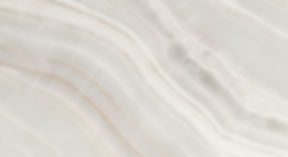When it comes to gemstones, there are a handful of minerals that are quintessential to the jewelry market. Among these are the well known minerals Emerald, Aquamarine, and Morganite.
But did you know that those three minerals are actually all the same thing?! Emerald, Aquamarine, and Morganite are all members of the Beryl mineral family, with different mineral iumpurities giving them the iconic hues they are well known for.
So what is the mineral group Beryl? It's an uncommon and rare silicate variation, with heavy inclusions of the metal Beryllium. This type of silicate is rare because it only forms in geologically specific environments, mostly within granite, rhyolite, or even in limestone and shale -- where the beryllium metal is present. It most often forms hexagonal crystal structures and is just as hard as quartz or harder with a Moh's hardness of 7.5-8. This resistance to scratches is also why beryl variations are considered jewelry grade gemstones.
Let's breakdown the most common and well known Beryl variations:
Emerald
This green beryl gets its color from inclusions of chromium and iron. Some of the most saturated emerald crystals are found in areas where the emerald has formed within carbonaceous deposits where chromium (and sometimes vanadium) is highly concentrated, resulting in deep green hues. These noteworthy localities include Colombia and Zambia. In ancient times, Egypt was considered the biggest source for emerald but since then higher qualities of emerald have been found around the world, mainly in South America. In the U.S, the main producer of emeralds are located in North Carolina.
However, when buying emerald beware. Many gemstones and cabochons made of emerald have been treated in some way. Whether heat treated to reduce the visibility of other mineral inclusions, or treated with resin to fill fracture points within the crystal.
In our shop we have an amazing twinning Emerald crystal cluster with inclusions of pyrite crystals all around it. If you are a local, I highly recommend stopping by and checking this crazy specimen out!

Aquamarine
Mostly known for being March's birthstone, aquamarine receives its color from inclusions of iron. Unlike its chromium cousin, aquamarine is known for its lack of other mineral impurities and the rare occurrence of fractures. This makes aquamarine a highly desirable gemstone. The transparent varieties of aquamarine have little to no inclusions, other than the iron impurities giving the crystal its color. The more cloudy looking crystals have more inclusions of other minerals and other impurities. Pakistan and Brazil are well known for producing some of the "gemmiest", highly saturated aquamarine crystals.
Unfortunately like any mineral, there are treated versions of aquamarine on the market. It is most often heat treated, in order to get a deeper blue color.
Our selection of aquamarine crystals and hand carved towers range in size, transparency, and saturation so be sure to check them out for yourself! We also have some breathtaking clusters listed on our online shop as well.

Morganite
This not-so-common beryl is characterized by its faint pink to champagne colored hues that result from trace amounts of manganese. Similar to aquamarine, morganite often forms with little to no inclusions or impurities which makes it a perfect candidate as a gemstone. Brazil is the largest producer of morganite. Unfortunately, most morganite you see on the market is heat treated. This is why it is best to find rough and unpolished morganite crystals. In recent years, it has gained traction in engagement rings as a rival to diamonds.


